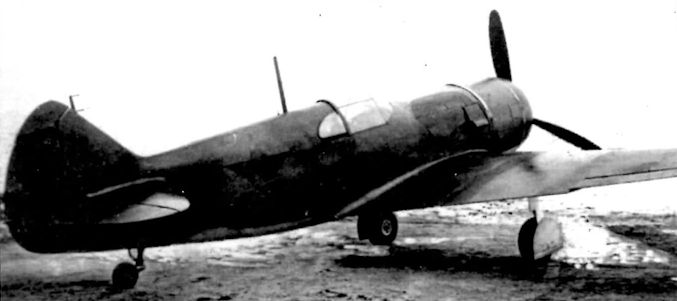The Soviet industry proved to be unable to build an efficient turbo-supercharger during the World War II and the era of mixed powered fighters was over: rockets, ramjets and thermojets were a dead end, but indigenous turbojets were not yet reliable at the end of the war.
In 1935 the German Dr. Ing. Hans-Joachim Pabst von Ohain patented a new propulsion system for aircraft which comprised a two-stage air compressor, with axial fan, followed by a centrifugal compressor and an inward-flow radial turbine.
To prove the concept, one private venture prototype, with 0.9 m overall length and 0.95 m of diameter, was built in 1935 by Max Hahn facilities.
The construction of the more sophisticated HeS1 (TL) jet engine, with radial-outflow compressor and radial-inflow turbine, started in the summer of 1936 at the Heinkel-Rostock facilities. The new engine was ground tested in March 1937, giving 136 kg static thrust only.
To further develop the HeS1 (TL) it was necessary to reduce engine RPM and obtain more thrust. To achieve this, four axial stages were added to the inlet to ease the load of the centrifugal compressor.
A year later, the HeS 3 (TL) engine, with 1.48 m length and 0.93 m of diameter, was bench tested, reaching 450 kg thrust.
The new engine was considered suitable for aircraft propulsion and the Heinkel He 178 experimental airplane was flown, on August 27, 1939, powered by one HeS 3b (TL) turbojet.
The He 178 was demonstrated to the RLM officials on November 1, 1939, but the Luftwaffe was not interested in the development of combat jet aircraft.
Instead, the Soviets quickly realized the potential of the new technology and in 1938 Arkhip Lyulka, an engineer of the Kharkov Aviation Institute, began the design of a gas turbine engine suitable for aircraft propulsion.
To prove the concept the RDT-1 prototype was built in 1939 at the Kirov-Leningrad plant.
The two-stage centrifugal Soviet turbojet, with 1.35 m length and 1.0 m of diameter, was very similar in shape and dimensions to the German HeS 3b. It was ground tested in December 1940, giving 500 kg thrust.
Further development of the Soviet RDT-1 turbojet led to the RDT-1/VDR-2, designed in 1939, with a new two-stage axial compressor added to the inlet.
The construction of one prototype that promised 750 kg thrust started in 1940. The new engine, with 2.2 m length and 1.06 m of diameter, was very similar in shape and dimensions to the German HeS 8. It was also cancelled in mid-1943 when the prototype was 70 percent built.
RDT-1/VDR-2 was scheduled to power the first Soviet jet fighter Gudkov Gu-VRD which also had to be cancelled.
Gu-VRD technical data
Wingspan: 31 ft. (9.5 m), length: 30.5 ft. (9.9 m), height: 9.68 ft. (2.95 m), wing surface: 122 sq. ft. (11 sq. m), take-off weight: 4,967 lb. (2,250 Kg), estimated maximum speed: 560 mph (900 km/h), proposed armament: one ShVAK 20 mm cannon and two UBS 12.7 mm machine guns.
In summer 1943, Lyulka started the design of the S-18/VRD-3 eight-stage axial-flow turbojet, with 2.10 m length and 0.75 m of diameter.
The new engine was bench tested in August 1945 giving 1,268 kg static thrust, but their mass production was dismissed because steel turbine blades were not heat-resisting enough for use in operational airplanes, due to technological backwardness of Soviet metallurgy alloys.
It was also necessary to cancel two fighter projects that had been designed to use RD-1/TKVRD axial-flow turbojets: The LaGG-3/RD (October 1942) and the Lavochkin-Gudkov VRDK-1 (1943).
LaGG-3/RD technical data
Wingspan: 34.4 ft. (10.5 m), length: 29 ft. (8.9 m), height: 8 ft. (2.45 m), wing surface: 202.6 sq. ft. (18 sq. m), estimated maximum speed: 435 mph (700 km/h).
Gu-VRDK-1 technical data
Wingspan: 32 ft. (9.8 m), length: 29 ft. (8.9 m), height: 7.6 ft. (2.03 m), wing surface: 188.5 sq. ft. (17 sq. m), take-off weight: 4,967 lb. (2,250 Kg), estimated maximum speed: 541 mph (870 km/h).




